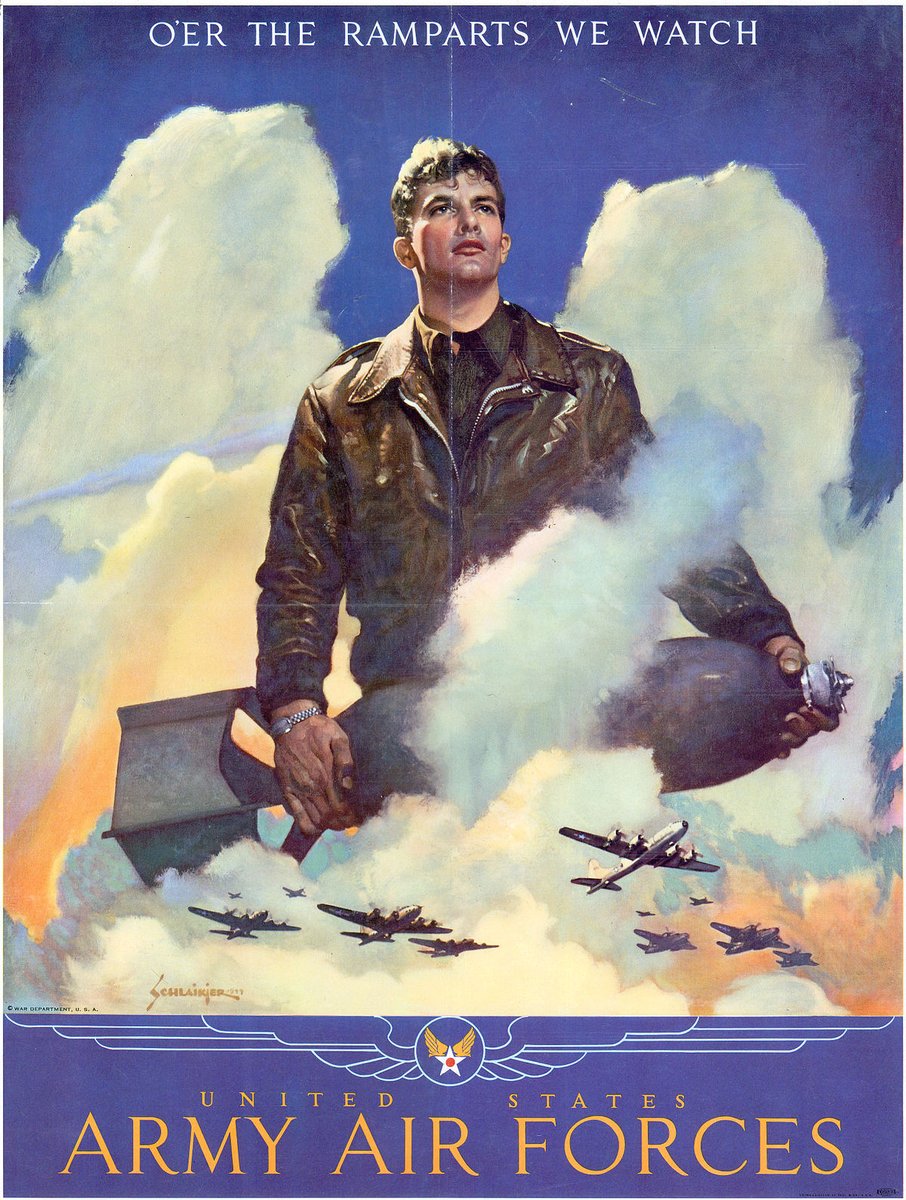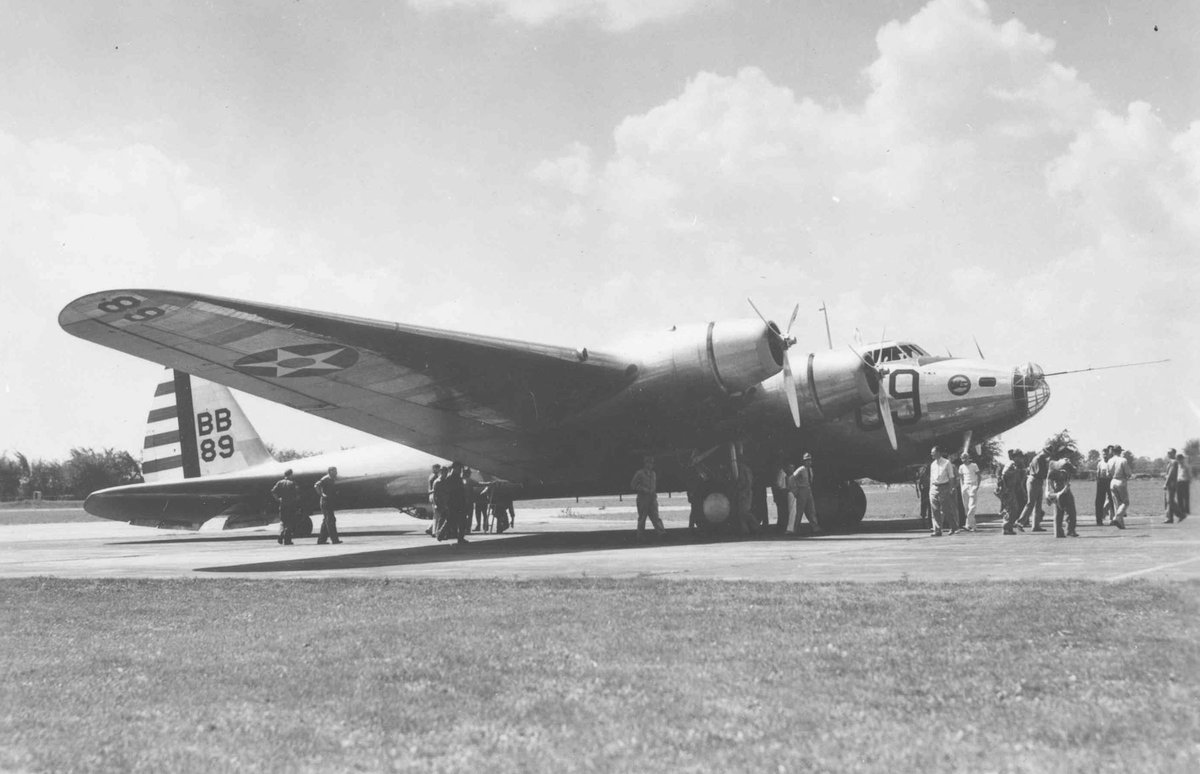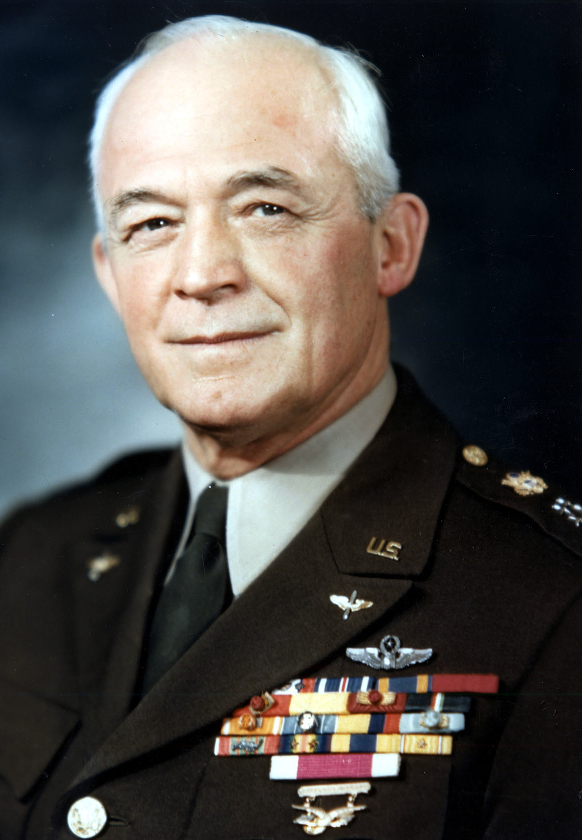The Interwar Years involved a series of agreements that would ultimately place limitations on the United States (and others, but we’re not discussing them right now) with regard to what was and was not acceptable for the armed forces. 

In 1922, the Washington Treaties reinforced the idea that armed forces should be for defense purposes only, not for offense at all. 







The Kellogg-Briand Pact of 1929 was basically a policy that nations would not use war to settle disputes. It would guide army planning and eventually prove crippling to the Army Air Corps. @usairforce 







In May of 1938, the Deputy Chief of Staff sent a program back to planners, which they had proposed for acquiring long-range bombers. He reiterated the limitations on the Air Corps: 

“Our national policy contemplates preparation for defense, not aggression... there would appear to be no need for a plane larger than the B-17.” 

The US Army Air Corps, which eventually became the separate @usairforce, had two pretty serious problems at this time. One was the American insistence on maintaining a defense-only mindset. 







The other was the persistent idea that the @USNavy should be responsible for operations on the ocean and in the air above it. 







In June of 1938, the Air Corps Chief was informed that “the unobligated funds set up for two B-15s will not be used for that purpose, nor for a YB-20, but will be applied to a portion of the 91 bombers, procurement of which was directed.”
(These are all B-15s)



(These are all B-15s)




The Air Corps had asked for a certain amount of money and, in that amount, expressed the desire for these long-range bombers. The Assistant Secretary of War bluntly told the Air Corps that they can have the money, but they can’t spend it on what they want.
Another warning against Air Corps experimentation with long-range bombing fleets was sent to the Chief of the Air Corps by the Secretary of War: “... estimates for bombers for FY1940 must be restricted to light, medium, and attack types.”
The Air Corps was not giving up.
The following year, in 1939, the Air Corps reported that its striking forces would “be required to extend the destructive effects of air operations over both land and sea, to great distances beyond their operating bases.”
(Henry H. Arnold, Chief of the USAAC from 1938-1941)
(Henry H. Arnold, Chief of the USAAC from 1938-1941)

In other words, for the Air Corps to meet the demands of its responsibilities and mission, it would need long-range bombing capabilities. 

We'll continue this story on Saturday 🙂
If you're just tuning in or you've missed any of the previous threads, you can find them all saved on this account under ⚡️Moments or with this direct link twitter.com/i/events/13642…
If you're just tuning in or you've missed any of the previous threads, you can find them all saved on this account under ⚡️Moments or with this direct link twitter.com/i/events/13642…
• • •
Missing some Tweet in this thread? You can try to
force a refresh
























